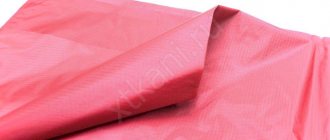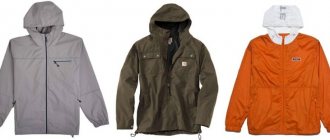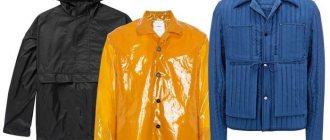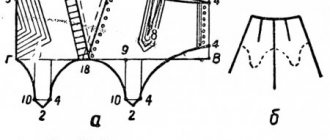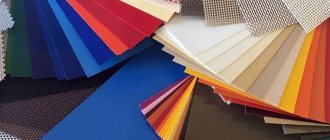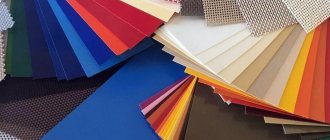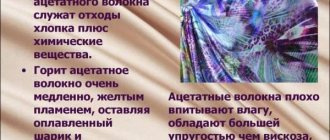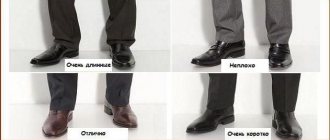Home / Synthetic fabrics
Back
Published: December 25, 2020
Reading time: 5 min
0
184
Nylon is a completely synthetic fabric made from polyamide fibers. It was created in the 30s of the 20th century and became widely used earlier than polyester. Nylon was revolutionary for its time: similar to silk, but 5-8 times cheaper, more durable and durable.
- 1 Description
- 2 History of appearance
- 3 Raw materials and manufacturing process
- 4 Quality characteristics 4.1 Moisture permeability
- 4.2 Degree of elongation
- 4.3 Density and strength
Description
Nylon is a fiber synthesized from amide copolymers. It is equally suitable for making women's stockings, military uniforms and mountaineering ropes. Thin nylon fabrics are smooth, pleasant to the body, attractive in real life and in photos: they have a noble shine. The first stockings made from the new material were more expensive than silk ones.
Nylon fiber is used alone and in combination with other materials for the production of clothing. Cotton-nylon retains the properties of natural fiber, while making it more elastic, durable, comfortable for sewing and wearing.
Application
Read about: staple fiber: features of production and application.
In the first years after the discovery of nylon, it was used mainly to produce bristles for toothbrushes, then the first women's nylon stockings were introduced. They became very popular in the early 40s of the last century.
During the Second World War, the demand for silk, from which parachute canopies were made, increased sharply. A material was needed that could have the same properties as silk, but would cost several times less and be more accessible. Since 1941, all nylon produced in the USA was used exclusively for the needs of the military industry - parachutes, cables, tents, and military ammunition were sewn from it. Body armor was made from ballistic nylon, consisting of polyamide threads of considerable thickness. After the end of the war, it was again allowed to be used in light industry.
Now the scope of nylon is also quite wide.
Cloth
The production of synthetic materials, including nylon, coincided with the peak of scientific progress. At that time, clothes made from them were considered ultra fashionable - they were bright, beautiful, original. Nowadays, environmental friendliness is more valued, but natural fabrics also have disadvantages - they are less practical and durable. The combination of both types of fibers made it possible to obtain modern environmentally friendly and durable materials.
- Very popular are fabrics that consist of natural fibers with the inclusion of polyamide threads (usually up to 30%). PA is added to cotton, linen, and silk. This significantly increases the practical properties of the fabric - they last much longer without losing their attractive appearance.
- Nylon is added to the material for the production of stockings, women's underwear (especially shapewear), dresses, blouses and trousers. It is better to wear such clothes in cool weather, as in hot weather they can cause increased sweating and discomfort.
- Rip-stop nylon is used to make durable and lightweight outerwear that protects from rain. This material consists of a base fabric reinforced with strong threads that prevent the formation of large holes when punctured.
- Cordura (fabric with a special weave structure of threads of varying thickness) is used to make very durable protective clothing, backpacks, tents, etc.
Answer
Items made from synthetic fibers are very popular. It is all the more important not to make a mistake in choosing. Which is better, polyester or nylon, or maybe polyurethane? It is impossible to answer this question unambiguously. Everything will depend on the purpose of the product and personal preferences, features and properties of the material. 100% polyurethane is indispensable for workwear, and polyester and nylon are for outerwear, for example, winter or demi-season jackets are sewn from nylon fabric, and light windbreakers are made from polyester, since this material is more “breathable”.
History of appearance
Nylon was created in 1935 by the explosives company DuPont. The inventor is organic chemist Wallace Carothers. Initially, his research was theoretical in nature; the scientist did not set any practical goals. DuPont simply assumed that the results would become of commercial interest over time. Carothers’ boss, Elmer K. Bolton, was also oriented toward practice.
The first result of the laboratory's work, called the "Hall of Pure Science" for its stellar composition of scientists, was neoprene, created in 1930. This is one of the first synthetic rubbers.
Then the search began for options for creating artificial silk from polyamides. During this period, Carothers obtained polymers with unique properties, from which threads were easily drawn at high temperatures. From this point on, the laboratory's attention focused on the new material, and by February 23, 1935, half an ounce had been synthesized. The new product is called polyamide 6-6. The material was difficult to work with due to its very high melting point, but Bolton found it commercially promising.
Interesting. There is a version that the name of the material, Nylon, is either an acronym for the names of two cities (New York + London). However, everything was more prosaic. John Ecclebury of DuPont explained back in 1940 that the letters “nyl” were arbitrary, and “on” was taken from the famous words for fabrics: cotton and rayon.
Raw materials and manufacturing process
Nylon is made from petroleum products. The chemical reaction is called polycondensation. Acids and aldehydes produce salt, which is heated. The resulting substance is thermoplastic, it is melted, pressed through special holes, dies, at the exit it turns into threads, which are immediately wound onto bobbins. The fiber for weaving is ready. It can be used to make stockings and parachute fabric - the result depends on the weaving pattern, thread density, and additives.
Fact. Thread density is measured in denier, den is the weight in grams per 9 km of length.
Qualitative characteristics
Characteristics of nylon:
- Easily accepts various dyes. The palette is not limited.
- Permanent color, coloring occurs during the technological process.
- Tensile strength. In its pure form it hardly stretches. To obtain plastic materials, it is combined with elastane.
- Resistance to mechanical and chemical influences. Has a low coefficient of friction. Insoluble in organic solvents, weak acids, alkalis, and not affected by salt water.
- Inertia. It does not cause allergies and does not in itself have a negative effect on the skin.
- Susceptible to high temperatures. When heated in air to +100… +120 °C, its strength decreases by 5-10 times.
- Doesn't wrinkle. Items need ironing only in certain cases.
Moisture permeability
Nylon repels moisture, does not allow it to pass through, and does not get wet. Moisture permeability of the finished product may occur, but this depends on the weaving and additional processing, and not on the quality of the material itself. For example, Oxford has a three-layer polyurethane coating, and UV-PU is coated with polyurethane on the inside, which provides water resistance of up to 2000 mm.
Nylon Taffeta with 4 layers of polyurethane withstands 10,000 mm of water column.
Extensibility degree
The stretchability of nylon is not comparable to elastane, which can stretch up to 600%. Nylon, when stretched by 16%, is irreversibly deformed by 9%. When stretched by 8%, nylon retains its original quality by 100%. The stretchability of nylon is not noticeable in the finished product, but in technological processes this parameter is taken into account. If you wind the threads onto bobbins with enough tension, the thread will tend to return to its original length and may crush the bobbins.
Author:
Anastasia Kukushkina
I hope you enjoy the article I have prepared for you! If you find errors in it, write to me about it! I will answer any questions you have, ask them!
